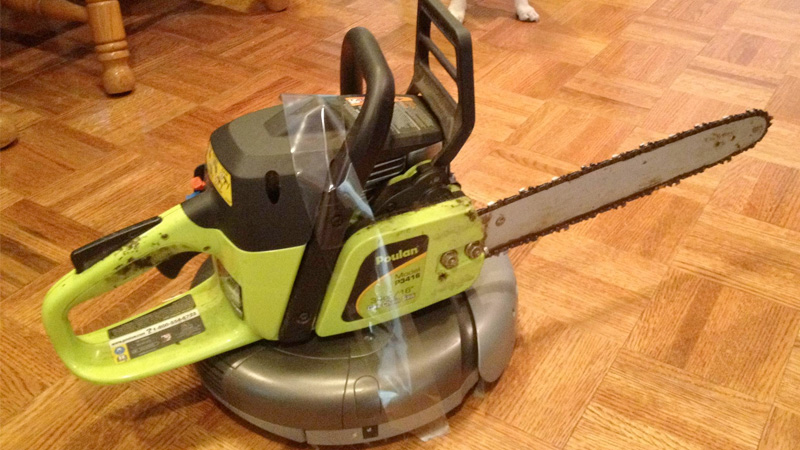Carrying on from our theme started last week, we’re continuing our look into some of the new weapons being brought into the Fort Alice Sourcebook.
Our weapon this week is a bit of a special case in that it’s actually not designed as a weapon at all. It’s intended use is for cleaning – and it just happens to work as a weapon in a pinch.

No, not really (though if you lot are interested in stats for a steam powered chainsaw, that’s something I might be inclined to create down the road). What we’re actually looking at today is the Steam Sprayer.
Steam Sprayer
Physical Defense: 7*
Mystic Defense: 0*
Physical Armor: 1*
Mystic Armor: 0*
Barrier Rating: 10*
Damage Step: 12
Success Bonus: +3
Range: 1/5
Price: N/A (Included with steam engine)
Availability: N/A (Included with steam engine)
*Defense and Barrier Rating statistics are for the supply hose
Description: Every large steam engine, whether it’s on a locomotive, road vehicle, or stationary factory machine, accumulates grime. Grease, coal dust, soot, condensate, and general conditions of their environment makes keeping the machines clean a constant battle, and a machine that gets dirty enough can make dials and gauges difficult to read or even potentially break down if grit gets in the wrong place. As the machine has a ready supply of steam on hand, nearly all will set up a valve connected to a length of hose for spraying pressurized steam for an easy cleaning tool. The hose is generally long enough to reach the entire work area; for a stationary engine, this means reaching around the entire work station. For a locomotive or other vehicle, this means reaching everywhere on the foot plate and often just outside to keep any glass surfaces needed for visibility clear.
More than once, on vehicles deployed in the field, the steam sprayer has been used as a weapon by a quick thinking operator to prevent intrusion and takeover of the vehicle. Using the steam sprayer in this way makes use of the Firearms skill. If a target takes any damage from a steam sprayer, they automatically incur a Harried penalty due to the pain from burn caused. Targets that are immune to pain, such as undead, or impervious to burns are exempt from this penalty. The range of the steam sprayed out is very limited, and aside from the hose limiting where it can be used, it also presents a vulnerability; if the hose is attacked while the valve is open and steam is being sprayed, all control over the steam will be lost, most likely damaging the user and anyone else nearby. Use the Scatter rules (1879 Player’s Guide, Page 252) to determine which direction the hose sprays, making damage tests for anyone caught in the area of effect. Continue each round until the valve for the steam is shut off. Fortunately, the hose is built quite thick with a protective outer coating to prevent this with normal wear and tear, so it does take some effort to cause a rupture.
In an emergency, the valve for the steam sprayer may also be used as a secondary pressure release for the boiler in conjunction with the safety valve. It does not have the release capacity of a safety valve, so if the safety valve is damaged it will not prevent an explosion. However, it may help buy a few rounds for an engineer to bring a boiler under control, or to delay an explosion long enough for those nearby to make a break for it and find some cover.

Normally, this isn’t the type of weapon your players are going to be carrying with them out into the field since it requires a full steam engine to supply it (though someone with a steam powered prosthetic could consider a modification to add one), and it’s got a significantly limited range. However, considering the heavy amount of damage that high pressure steam burns can do, it’s a very good tool to keep in the back of your mind as an impromptu weapon should the situation arise.
Can you think of any other tools that might end up finding different use during an 1879 scenario? Are there other ones you’d like to see us write up stats for? As always, let us know on Discord.
That does it for this week. We’ll see you next Sunday for part 3!
